Self-publishing is no longer a second option—it’s a thriving path for modern authors. In 2025, new platforms, AI-assisted tools, and global distribution channels make it easier than ever to publish a professional-quality book on your own terms.
In this post, we’ll walk you through How to Self-Publish Your Book 2025: Step-by-Step for Beginners, covering every major phase you need to launch successfully, including the essential details on how to self-publish your book.
Table of Contents
A. Define Your Book’s Purpose and Audience
Before you start writing, you need clarity on two key things: why you’re writing the book and who you’re writing it for. This step forms the foundation for everything else covered in How to Self-Publish Your Book. Without a clear purpose and audience, your book will struggle to connect or sell.
Understanding how to self-publish your book is the key to taking control of your writing career.
1. Know Your “Why”
Ask yourself:
- Are you writing to teach, inspire, entertain, or persuade?
- Do you want to build authority, launch a business, or share a personal story?
- Is your goal to reach a wide audience or a niche community?
Clarity here will guide your tone, format, and marketing strategy later on.
2. Identify Your Ideal Reader
You can’t write a book for everyone. Instead, define your ideal reader — the person most likely to buy and benefit from your book.
Ask:
- What age group are they in?
- What are their interests, struggles, or dreams?
- What kind of books do they already read?
Create a simple reader avatar (also known as a reader persona). For example:
“Emily is 29, loves personal development books, listens to podcasts, and wants to write her first book but doesn’t know where to begin.”

3. Research Your Niche
Use tools like:
- Amazon Best Sellers lists
- Google Trends
- Publisher Rocket
to explore what your target readers are already buying and searching for.
This helps you position your book with the right title, keywords, and category, which are all critical for discoverability — a key theme in How to Self-Publish Your Book.

4. Align Purpose with Audience
Once you’ve defined your purpose and reader, align the two. For example:
- If you’re writing to teach time management to young professionals, make sure your tone is straightforward, modern, and practical.
- If your book is a memoir about overcoming trauma, focus on emotional connection and relatability.

Final Tip
Keep your purpose and audience visible as you write — literally. Print your reader avatar or purpose statement and keep it near your writing space. This keeps you focused and consistent throughout the writing and publishing process.
B. Writing the Book
Once you’ve defined your purpose and audience, it’s time to start writing. This section walks you through how to write efficiently, avoid overwhelm, and stay on track—even if it’s your first book.
1. Create a Simple Outline
Start with a basic structure to organize your thoughts. Your outline doesn’t need to be perfect, but it should include:
- A working title
- Chapter topics or major themes
- Bullet points under each chapter to guide content
Outlining saves time and prevents writer’s block by giving you a clear roadmap.

2. Set a Writing Routine
Writing a book takes consistency. Here’s how to stay productive:
- Set a daily or weekly word count goal (e.g., 500–1,000 words/day)
- Choose a dedicated time and place to write
- Use a distraction-free writing tool (like FocusWriter or Scrivener)
Even writing a small amount daily adds up. A 50,000-word book can be written in just 2–3 months with steady effort.
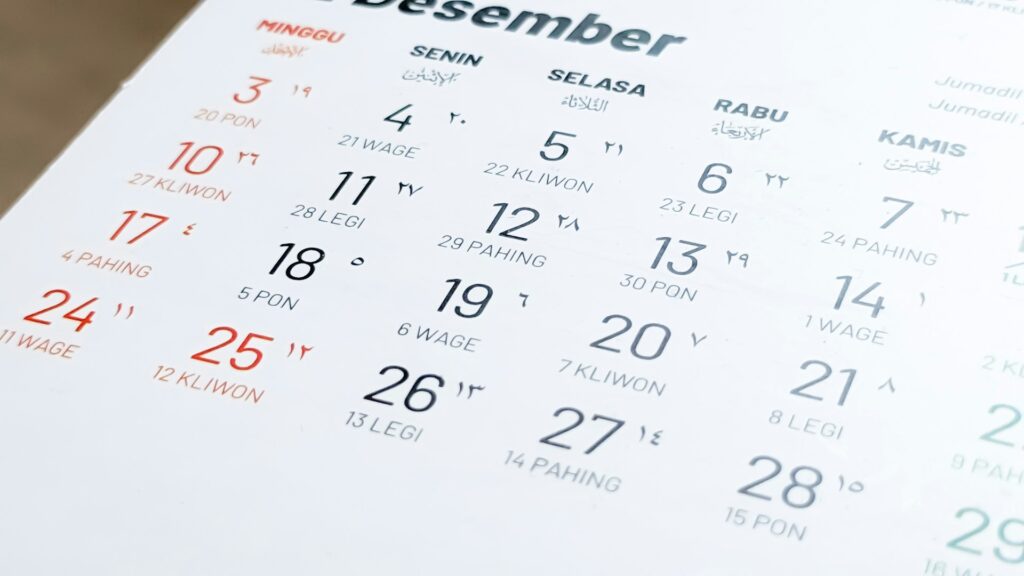
3. Use Writing Tools to Stay Focused
The right tools can make the writing process smoother. Here are a few author favorites in 2025:
- Scrivener – Great for organizing chapters and research
- Atticus – All-in-one writing and formatting tool
- Google Docs – Ideal for collaboration and cloud access
- Hemingway Editor – Helps simplify your writing
Many beginner authors featured in The Ultimate Guide to Self-Publishing in 2025: Step-by-Step for Beginners credit their success to combining great tools with a steady routine.
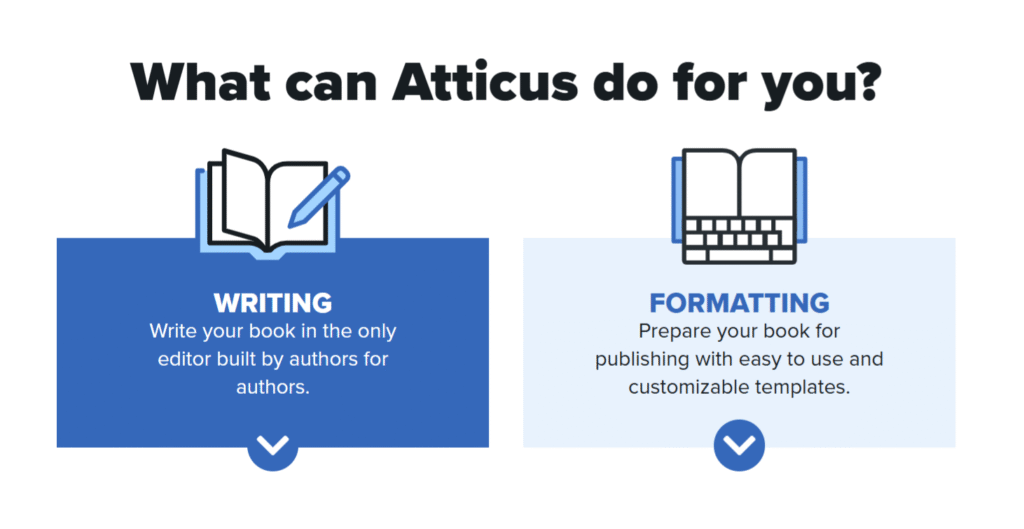
4. Write Now, Edit Later
Don’t get stuck trying to perfect every sentence. First drafts are supposed to be messy. Focus on getting the words out, and leave the fine-tuning for the editing phase.
- Avoid backspacing too much
- Use placeholders (e.g., [insert stat], [fact check this])
- Push through to the end — you can fix it later
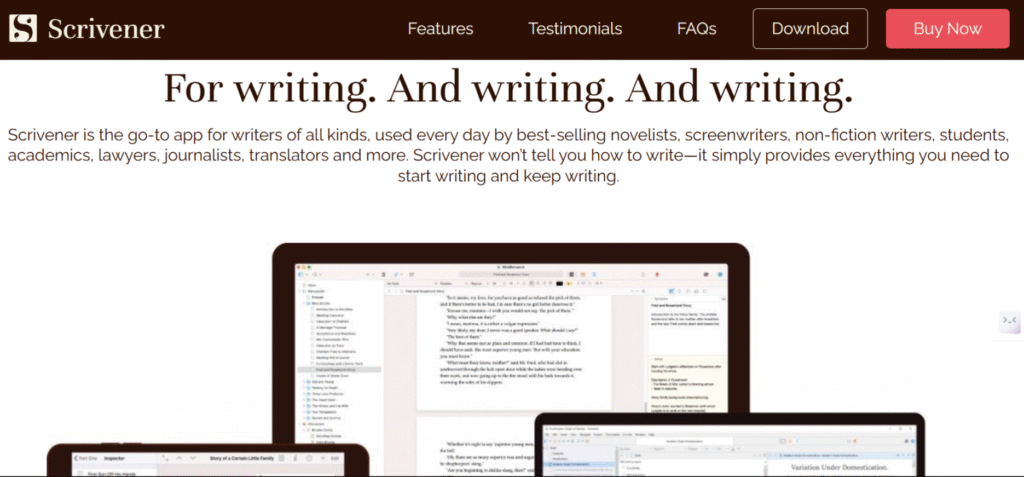
5. Keep Your Reader in Mind
As you write, always think about your ideal reader. Ask:
- Will this chapter help them?
- Is the tone relatable for my audience?
- Am I writing with clarity and purpose?
This ensures your content stays relevant, engaging, and marketable — a key principle in The Ultimate Guide to Self-Publishing in 2025: Step-by-Step for Beginners.
Final Tip
Perfection isn’t the goal — completion is. Your book can’t change lives if it stays in your head. Stay consistent, trust the process, and remember: every bestselling author started with a first draft just like yours.
C. Editing Like a Pro
One of the most important — and often underestimated — steps in How to Self-Publish Your Book is editing. Great editing transforms your manuscript from a rough draft into a polished, professional book that readers trust and enjoy.
You don’t need to be a grammar expert to edit like a pro. You just need the right process, tools, and mindset.
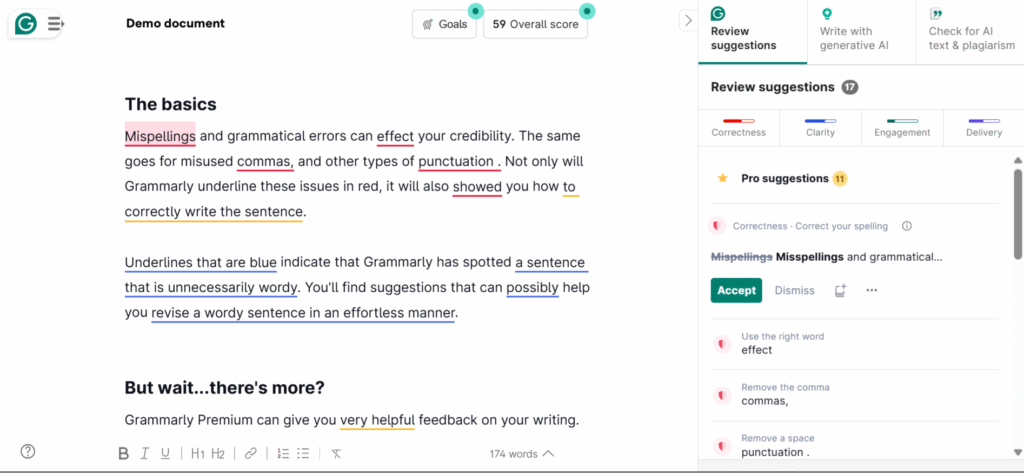
1. Understand the 3 Stages of Editing
Professional editing is typically done in layers. Each stage serves a different purpose:
- Developmental Editing
Focuses on big-picture issues like structure, plot holes, pacing, and character development (for fiction) or logical flow (for nonfiction). - Line Editing
Improves the clarity, tone, and readability of your writing without changing the core content. - Copyediting & Proofreading
Fixes grammar, punctuation, spelling, and formatting errors — the final polish before publishing.
2. Let Your Manuscript Rest
Before jumping into edits, take a break. Give yourself a few days (or even a week) away from your manuscript. This “cooling off” period allows you to return with fresh eyes and spot mistakes you missed before.
3. Start with Self-Editing Tools
Self-editing is your first pass. In 2025, several AI-powered tools make this step much easier:
- Grammarly – Great for basic grammar and clarity suggestions
- ProWritingAid – Offers in-depth style, pacing, and readability reports
- Hemingway Editor – Highlights overly complex sentences and passive voice
- ChatGPT – Can help rephrase awkward paragraphs or check tone consistency
These tools won’t replace a professional editor, but they will significantly clean up your draft before outsourcing.
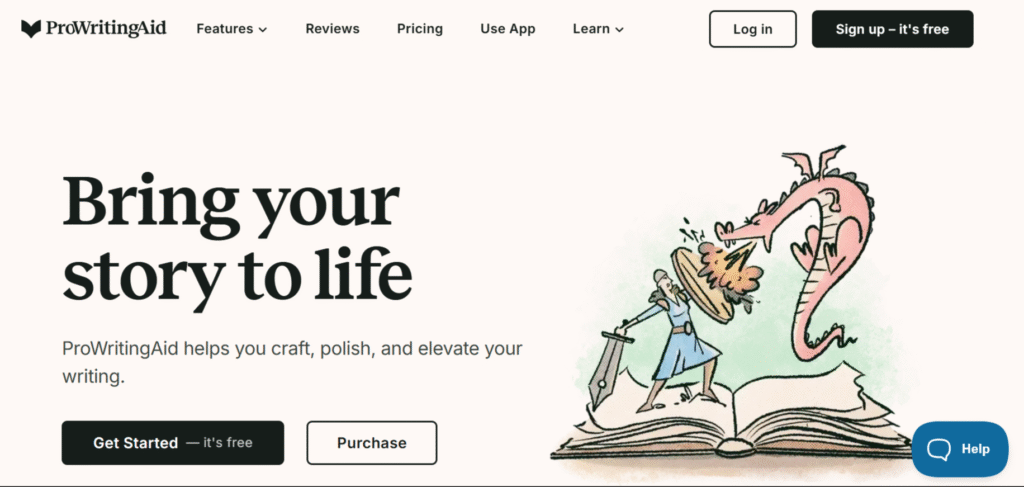
4. Get Human Feedback
No tool can replace the insights of a real person. After self-editing, consider:
- Beta readers – Give honest, reader-level feedback on clarity, engagement, and structure.
- Professional editors – Offer expertise in developmental, line, and copyediting. Look for editors who specialize in your genre.
You can find vetted editors on platforms like Reedsy, Fiverr Pro, or Upwork, depending on your budget.
5. Don’t Skip Proofreading
Proofreading is the final sweep to catch typos, punctuation mistakes, or formatting issues. Even professionally edited books can have lingering errors — don’t skip this final polish.
You can either:
- Hire a proofreader
- Use tools like PerfectIt or Linguix
- Print a physical copy and proof it manually (surprisingly effective!)

Final Tip
Editing can feel overwhelming, but it’s a critical part of producing a high-quality book. Take your time, use the best tools available, and don’t be afraid to invest in professional help when needed. In The Ultimate Guide to Self-Publishing in 2025: Step-by-Step for Beginners, editing isn’t an afterthought — it’s a superpower.
D. Formatting for eBook and Print
Formatting may not be the most glamorous part of writing a book, but it’s one of the most crucial. If your book doesn’t look good on the page or screen, readers won’t take it seriously — no matter how great the content is.
In How to Self-Publish Your Book, formatting is where your manuscript transforms into a professional product ready for digital stores and physical shelves.
1. Understand the Two Main Formats
You’ll need two different versions of your book:
- eBook Format (ePub or MOBI): Designed for screens — flexible layout that adapts to devices like Kindle, Kobo, and tablets.
- Print Format (PDF): A fixed layout optimized for paperback or hardcover printing (used by platforms like Amazon KDP or IngramSpark).

2. Use the Right Tools
Gone are the days of wrestling with Word files. In 2025, several tools make formatting easy, even for beginners:
- Atticus – An all-in-one writing and formatting tool for eBook and print
- Vellum – Mac-only, ideal for clean and beautiful formatting
- Reedsy Book Editor – Free browser-based formatting tool
- Scrivener – Offers advanced export options with templates
- Calibre – Great for converting between file types like MOBI and ePub
Each of these tools has templates, preview features, and export options tailored for different platforms.
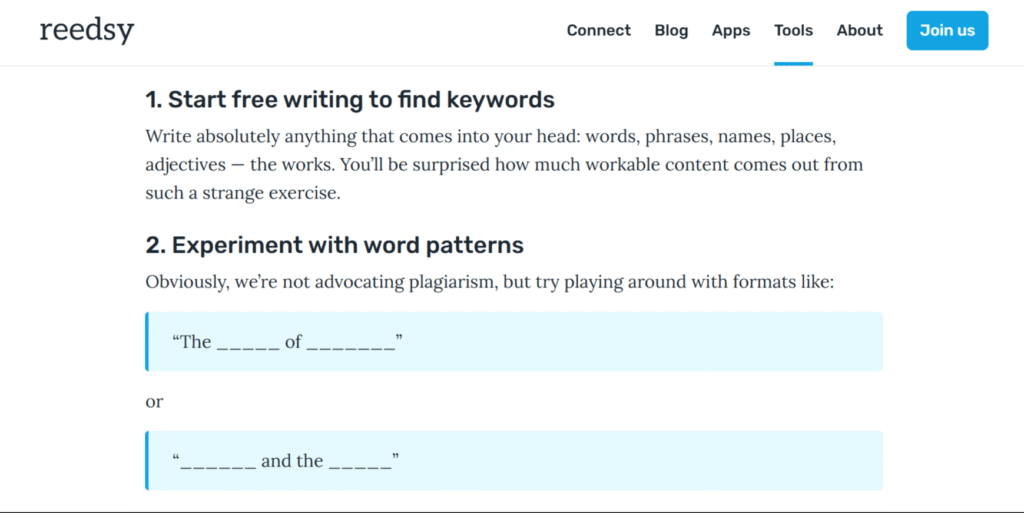
3. eBook Formatting Best Practices
When formatting for eBooks:
- Use a reflowable layout (text adjusts to screen size)
- Avoid page numbers — eReaders handle that
- Use simple fonts (e.g., Times New Roman, Georgia)
- Include clickable table of contents and chapter links
- Embed your cover image in the file.
4. Print Formatting Best Practices
For print books:
- Set the correct trim size (e.g., 5″ x 8″, 6″ x 9″) based on your genre
- Use justified alignment for body text
- Include headers, footers, and page numbers
- Start each chapter on a new page
- Leave space for a gutter margin (inside margin for binding)

5. Test Before You Publish
Always preview your files before publishing:
- For eBooks, use the Kindle Previewer or upload to a test device
- For print, order a proof copy from KDP or your printer
This step ensures your text, images, and layout display correctly. Mistakes in formatting can lead to poor reviews or even rejections from publishing platforms.

Final Tip
Formatting is the bridge between writing and publishing. A well-formatted book enhances your credibility and creates a better reader experience. As covered in The Ultimate Guide to Self-Publishing in 2025: Step-by-Step for Beginners, getting your formatting right the first time saves you time, money, and stress.
E. Designing a Cover That Sells
Your book cover is the first impression readers will have. It doesn’t just represent your story — it’s a powerful marketing tool. In fact, many readers will decide whether or not to click on or buy your book based on the cover alone.
That’s why in The Ultimate Guide to Self-Publishing in 2025: Step-by-Step for Beginners, we emphasize that a professional-looking cover can make the difference between a book that sells and one that gets ignored.
1. Know Your Genre Expectations
Every genre has visual trends readers subconsciously expect. For example:
- Romance: Soft colors, scripted fonts, often features people
- Thriller: Dark backgrounds, bold text, minimal imagery
- Self-help/Nonfiction: Clean layout, bold title, clear subtitle
Study the top-selling books in your genre. Notice the colors, fonts, and image styles they use — then design your cover to align with reader expectations while still standing out.

2. Focus on Readability (Even at Thumbnail Size)
Most readers will first see your book as a small thumbnail on Amazon or other platforms. If they can’t read the title or see the design clearly at a small scale, you could lose their attention.
Key tips:
- Use large, high-contrast fonts
- Keep it simple and uncluttered
- Make sure your title and name stand out
3. Hire a Professional Designer (If You Can)
While DIY tools exist, a professional cover designer understands layout, color theory, typography, and genre-specific styles.
Recommended platforms:
- Reedsy – Pre-vetted designers by genre
- Fiverr Pro – Affordable and fast
- 99designs – Run a contest and choose your favorite design
If budget is tight, use tools like Canva, BookBrush, or Adobe Express, but always get feedback from other authors or readers before publishing.
4. Include These Key Elements
Your cover should include the following:
- Title – Big, bold, and readable
- Subtitle (if applicable) – Clarifies your topic or benefit
- Author name – Usually at the bottom
- Background image or design – Should not overpower the text
- Optional: Endorsements, tagline, or series logo
Avoid stock photo clichés, overly busy designs, or outdated fonts.
5. Test Your Cover
Before launching, test your cover with real readers:
- Create multiple versions and run a poll in a Facebook group or Reddit thread
- Use PickFu to get split-test feedback from potential buyers
- Ask: “Which would you click on?” or “What genre does this look like?”
Feedback can reveal surprising insights — sometimes your “favorite” might not be the most effective.
Final Tip
Your book cover isn’t just art — it’s a sales tool. A great cover communicates your genre, your tone, and your professionalism at a glance. As emphasized in The Ultimate Guide to Self-Publishing in 2025: Step-by-Step for Beginners, investing time (and if possible, money) into your cover design can lead to significantly more clicks, downloads, and purchases.
F. Choosing the Right Publishing Platforms
One of the biggest decisions you’ll make in your self-publishing journey is where to publish your book. The platform you choose affects everything — from your book’s visibility and royalties to its format, pricing, and audience reach.
In The Ultimate Guide to Self-Publishing in 2025: Step-by-Step for Beginners, we break down the best publishing platforms and help you choose the ones that match your goals.
1. Amazon KDP (Kindle Direct Publishing)
Best for: Maximum exposure, ease of use, Kindle eBooks & paperbacks
Royalties: 35% or 70% (eBook), ~60% minus printing cost (print)
Exclusivity option: KDP Select (90-day exclusivity for extra perks)
Amazon KDP dominates the self-publishing space. If you’re only going to publish on one platform, this is the one to start with.
Pros:
- Huge global audience
- Simple interface
- Fast publishing (24–72 hours)
Cons:
- Heavily saturated
- KDP Select limits you to Amazon (if enrolled)
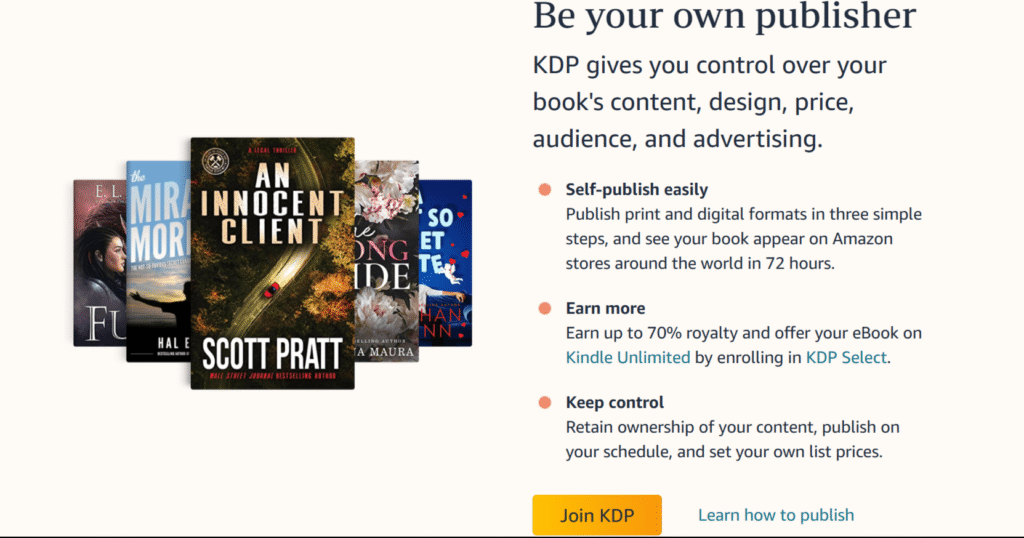
2. Draft2Digital
Best for: Wide distribution to non-Amazon stores (Apple Books, Barnes & Noble, Kobo)
Royalties: Varies by store (usually 60–70%)
Exclusivity: None – can be used alongside Amazon KDP
Draft2Digital (D2D) is ideal if you want to publish “wide” — meaning outside of Amazon. They handle distribution and formatting, and you keep control of your book.
Pros:
- Distributes to 10+ retailers
- Free formatting tools
- Easy royalties and reporting
Cons:
- Doesn’t yet support print books (still in beta)
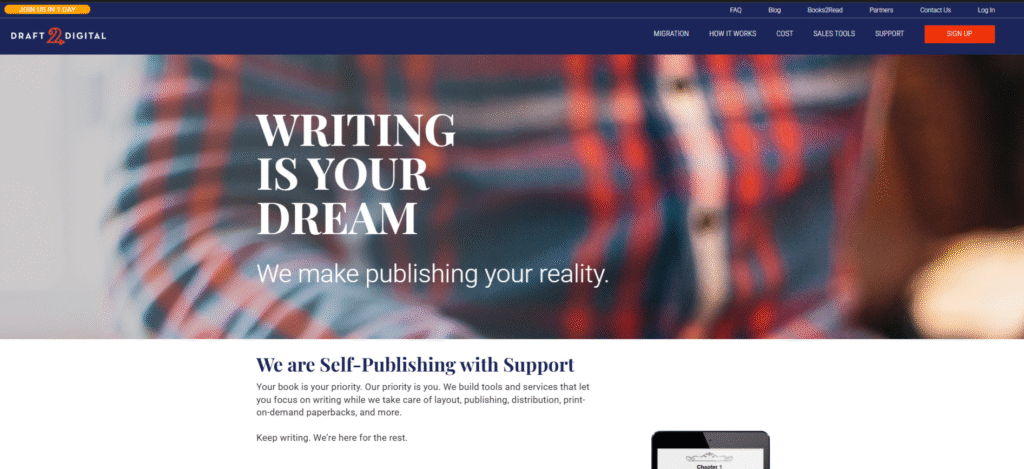
3. IngramSpark
Best for: Wide print distribution (libraries, bookstores, academic channels)
Royalties: 40–55% (after print costs)
Exclusivity: None
IngramSpark is the go-to for serious print distribution. Unlike KDP, it gives your book access to thousands of bookstores, libraries, and wholesalers.
Pros:
- Global print reach
- Professional quality options
- Hardcover printing available
Cons:
- Setup fees (though often waived with promo codes)
- Slightly steeper learning curve
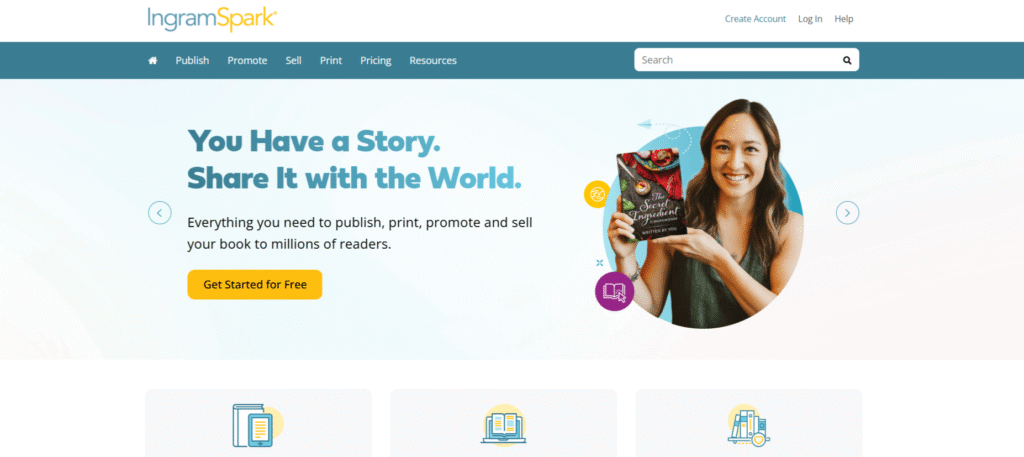
4. Kobo Writing Life
Best for: Direct access to Kobo’s global eBook audience (especially Canada, Europe, Asia)
Royalties: 70% for books over $2.99
Exclusivity: None
If your target audience includes international readers, Kobo is worth considering. They’re a major player outside the U.S.
Pros:
- Strong non-US market
- Simple dashboard
- Built-in promotions tab
Cons:
When you understand how to self-publish your book, you empower yourself as an author.
- Smaller U.S. presence
- Requires separate management if you’re using multiple platforms
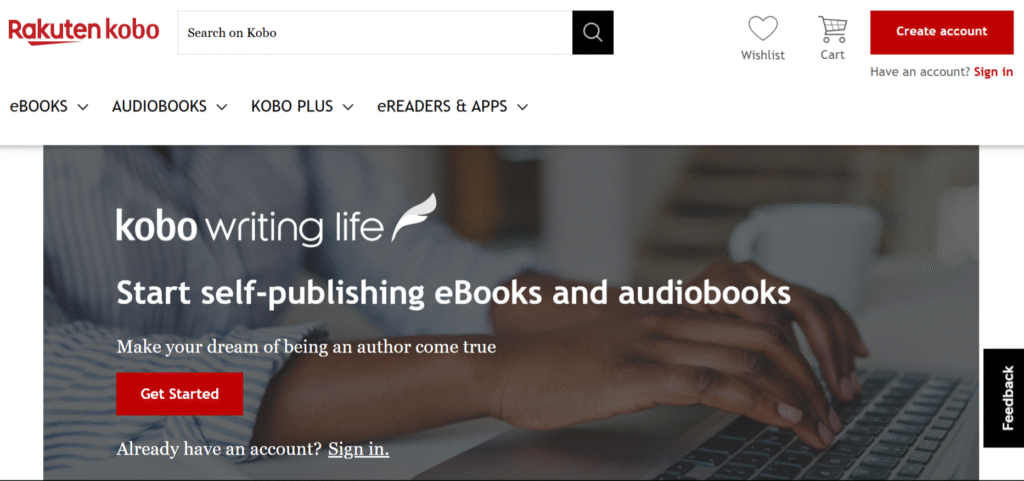
5. Apple Books & Google Play Books
Apple Books: Strong audience among iOS users. Can publish directly via iTunes Connect.
Google Play Books: Re-emerging as a key player. Easy discoverability via Google Search.
Note: You can reach both via Draft2Digital if you don’t want to manage separate accounts.
Which Strategy Should You Choose?
There are two main strategies:
- Amazon Exclusive (KDP Select)
✔ Best for new authors looking for Amazon visibility
✔ Great for Kindle Unlimited page reads
✘ Limited to Amazon only - Wide Distribution (KDP + D2D + IngramSpark)
✔ Ideal for building long-term revenue across platforms
✔ Not reliant on Amazon
✘ More accounts to manage
Final Tip
As you’ve learned in The Ultimate Guide to Self-Publishing in 2025: Step-by-Step for Beginners, your publishing platform affects your marketing, royalties, and growth potential. Choose the one that aligns with your long-term goals — and remember, you can always adapt your strategy as you grow.
G. Pricing, Royalties, and ISBNs
Understanding the basics of pricing, royalties, and ISBNs is a critical part of Self-Publishing in 2025. These elements impact how much you earn, where your book is distributed, and how professional your book appears to retailers and readers.
1. Pricing Your Book Strategically
Choosing the right price point is both an art and a science. Consider the following when setting your price:
- Genre Standards: Research similar books in your category to see common price ranges.
- Length and Format: Longer books or print editions typically cost more.
- Audience Willingness to Pay: Nonfiction and niche markets may support higher pricing.
- Introductory Offers: Consider launching with a lower price or free promo to generate visibility.
| Genre | eBook Price Range | Paperback Price Range | Hardcover Price Range |
|---|---|---|---|
| Romance | $2.99 – $4.99 | $9.99 – $12.99 | $17.99 – $22.99 |
| Mystery/Thriller | $3.99 – $5.99 | $10.99 – $13.99 | $18.99 – $24.99 |
| Science Fiction | $3.99 – $6.99 | $11.99 – $14.99 | $19.99 – $25.99 |
| Fantasy | $4.99 – $7.99 | $12.99 – $15.99 | $20.99 – $26.99 |
| Nonfiction (General) | $4.99 – $9.99 | $12.99 – $17.99 | $22.99 – $29.99 |
| Business/Self-Help | $6.99 – $11.99 | $14.99 – $19.99 | $24.99 – $32.99 |
| Memoir/Biography | $5.99 – $9.99 | $13.99 – $18.99 | $21.99 – $28.99 |
source- Reedsy, Kindlepreneur.
2. Understanding Royalties
Royalties are the percentage of revenue you earn from each sale. The major platforms offer different royalty rates:
- Amazon KDP
- eBooks: 70% (priced between $2.99 and $9.99); 35% for other price points
- Print books: Typically 60% minus printing costs
- Draft2Digital & Other Aggregators
- Vary by retailer but generally fall within the 60–70% range
- IngramSpark
- Allows you to set your own discount for retailers; common royalties range from 40–55%
| Platform | Format | Royalty Rate | Notes |
|---|---|---|---|
| Amazon KDP | eBook | 70% (for $2.99–$9.99), otherwise 35% | Delivery fees apply (usually ~$0.15/MB). ASIN assigned. |
| Paperback | 60% of list price – printing cost | ISBN provided free (Amazon listed as publisher). | |
| Hardcover | 60% of list price – printing cost | Only available through KDP for certain trim sizes. | |
| IngramSpark | Paperback/Hardcover | 40–55% (you set retailer discount) | Charges setup fees (can be waived with promo codes). ISBN required. |
| eBook | 40% (varies by retailer) | Distribution to Apple Books, Kobo, etc. | |
| Draft2Digital | eBook | ~60% (after retailer cut) | Distributes to Apple Books, B&N, Kobo, OverDrive, etc. ISBN provided free. |
| Print (via D2D Print) | ~45% (after print cost & wholesale discount) | Still in beta or limited rollout as of 2025. |
3. What You Need to Know About ISBNs
An ISBN (International Standard Book Number) is a unique identifier for your book. Here’s what beginners need to know:
- Do you need one?
- eBooks: Not always required (Amazon assigns an ASIN instead)
- Print books: Strongly recommended, especially for wide distribution
- Where to get it?
- U.S. Authors: Buy directly from Bowker (myidentifiers.com)
- Free ISBNs: Platforms like Amazon KDP and Draft2Digital offer free ISBNs, but they list the platform as the publisher
- Why buy your own?
- More control over your imprint name
- Easier to switch platforms or expand to bookstores.
Final Tip
In The Ultimate Guide to Self-Publishing in 2025: Step-by-Step for Beginners, getting your pricing, royalties, and ISBNs right can make a big difference in both professionalism and profit. Take your time, do your research, and choose what aligns best with your publishing goals.
H. Building a Launch Plan
Publishing your book is only half the battle — launching it effectively is what gets it into readers’ hands. A smart launch plan builds buzz, drives sales, and helps your book rank well on platforms like Amazon.
We stress that even a well-written book can go unnoticed without a solid launch strategy. Here’s how to do it right:
1. Set a Realistic Timeline
Give yourself at least 4–6 weeks before launch day to build momentum. A basic timeline might look like this:
- Week 1–2: Finalize book files, build ARC list
- Week 3: Schedule promos and email campaigns
- Week 4: Push pre-orders and social media content
- Launch Day: Go live, email list, promote everywhere
- Post-Launch: Collect reviews, run follow-up ads
2. Assemble Your Launch Team
A launch team (also called a street team) is a group of early supporters who help spread the word. They might:
- Read and review the book early
- Share it on social media
- Give feedback on your cover or blurb
Offer them a free copy of your book (ARC) in exchange for an honest review and support.

3. Prepare Your Marketing Materials
Have the following assets ready:
- Your book cover and mockups
- A strong blurb and tagline
- Prewritten social media posts
- Email templates for your list
- Review request message for ARC readers
Creating these in advance saves time and keeps your messaging consistent.
4. Schedule Promotions and Giveaways
Boost visibility by lining up promotions during launch week:
- Free or discounted launch price
- List your book on deal sites (e.g., BookBub, Freebooksy, Bargain Booksy)
- Run giveaways on social media or Goodreads
- Use services like BookSprout or StoryOrigin for ARC distribution
5. Activate Your Email List and Social Channels
Use your email list to warm up readers before launch. A simple sequence might include:
- Teaser email: “Something big is coming…”
- Cover reveal and blurb
- Pre-order announcement
- Launch day email
- Reminder + review request
Also post on your social media regularly with quotes, behind-the-scenes content, and countdowns.
6. Encourage Early Reviews
Ask your launch team and first buyers to leave reviews on Amazon and Goodreads. Social proof drives future sales and boosts your ranking.
Tip: Never ask for 5-star reviews — just honest feedback.
Final Tip
A great launch isn’t just about one big day — it’s about building lasting visibility. As covered in The Ultimate Guide to Self-Publishing in 2025: Step-by-Step for Beginners, a clear and organized launch plan can help your book stand out in a crowded marketplace and build momentum that lasts well beyond release week.
I. Marketing After Launch
Your book is live — congratulations! But don’t stop here. The real success of your self-published book often depends on what happens after launch day. Long-term marketing ensures consistent sales, builds your author brand, and helps you grow a loyal readership.
We emphasize that post-launch marketing is not optional — it’s essential.
1. Build an Author Platform
An author platform is your ongoing connection to readers. After launch, invest time in:
- Growing your email list (offer a lead magnet like a bonus chapter or free novella)
- Use platforms like Kit or Mailchimp, or others, for email marketing.
- Posting regularly on social media
- Engaging in reader communities (Facebook groups, Reddit, Goodreads)
This builds trust and keeps your book (and future releases) visible.
2. Use Amazon Ads and Meta Ads
Paid advertising is one of the best ways to sustain book sales post-launch.
- Amazon Ads (KDP): Target keywords, categories, or similar books.
- Meta Ads (Facebook/Instagram): Promote your book to specific reader interests.
- Set a small daily budget ($5–10) and monitor ROI.
Start small, test different creatives, and scale what works.
3. Promote Through Content Marketing
Write blog posts, Medium articles, or even guest posts that tie into your book’s theme or genre. For nonfiction, this is especially powerful — you can link back to your book naturally.
Examples:
- A memoir author writes a blog about the life lesson behind their story
- A fantasy author blogs about world-building tips for aspiring writers
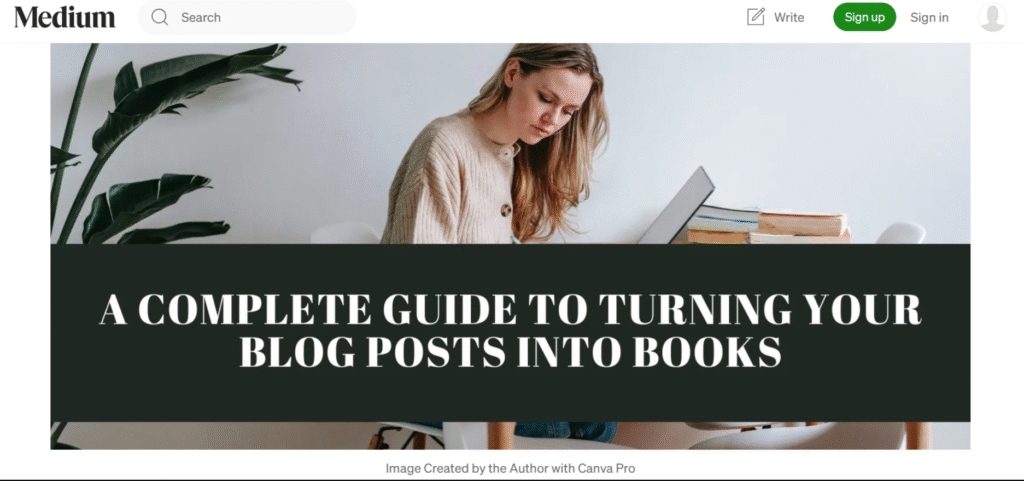
4. Ask for Reviews — Continuously
Don’t stop asking for reviews after launch week. More reviews = more trust. Try:
- Adding a polite review request at the end of your book
- Sending an email reminder to early buyers or subscribers
- Asking reviewers from past books to check out your new one
5. Run Promotions Periodically
Use promotional pricing to spike sales and boost visibility. Services to help promote include:
- BookBub Featured Deals (highly competitive, but powerful)
- Bargain Booksy
- Freebooksy
- Book Cave
Rotate promos every few months to maintain momentum.
6. Keep Writing
The best long-term marketing strategy? Publish more books. A reader who loves one book is likely to buy more from you. Series and related books (even loosely connected) encourage binge reading.
Mention your other books in your back matter and keep readers in your ecosystem.

Final Tip
As covered in The Ultimate Guide to Self-Publishing in 2025: Step-by-Step for Beginners, successful authors treat marketing as an ongoing process. A strong launch gets you noticed — but consistent, smart post-launch marketing keeps your book alive and growing in the rankings.
J. Measuring Success and Scaling Up
Tracking your progress and knowing when and how to scale your efforts is crucial to long-term success as a self-published author. In The Ultimate Guide to Self-Publishing in 2025, understanding the metrics that matter helps you make informed decisions, optimize your strategies, and grow your author career sustainably.
1. Define Your Success Metrics
Before measuring success, clarify what success means for you. Common goals include:
- Number of books sold
- Revenue generated
- Growth of your email list
- Number of reviews and average rating
- Engagement on social media
- Ranking on platforms like Amazon
Tracking these metrics over time reveals what’s working.
2. Use Analytics Tools
Leverage tools designed for authors to gather data easily:
- Amazon KDP Reports: Track sales, royalties, and trends by region and format.
- Book Report or KDSpy: User-friendly apps to analyze Amazon sales data.
- Google Analytics: If you have an author website, monitor traffic and user behavior.
- Email Marketing Platform Stats: Monitor open rates, click rates, and subscriber growth.
Regularly reviewing these numbers helps you spot growth opportunities or warning signs early.
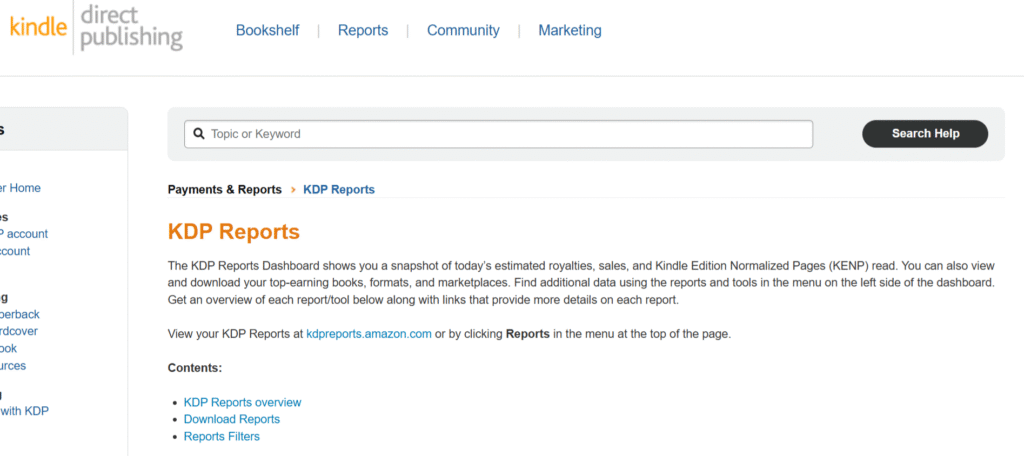
3. Experiment and Optimize
Use your data to test different strategies:
- Try different book pricing and promotional tactics
- A/B test cover designs or ad creatives
- Vary your email marketing content or send times
- Explore new marketing channels like podcasts or book clubs
Document your experiments and analyze results to invest your time and money wisely.
4. Scale Your Marketing and Production
Once you identify what works, scale up gradually:
- Increase your advertising budget on winning campaigns
- Hire professionals (editors, cover designers, marketers) to improve quality and save time
- Plan multiple book releases per year to build a stronger catalog
- Expand into audiobooks or translations to reach new audiences
Scaling thoughtfully prevents burnout and maximizes returns.

5. Set New Goals and Celebrate Wins
Regularly update your goals as you grow. Celebrate milestones to stay motivated, whether it’s hitting a sales target, earning your first 5-star review, or launching a new book.
As you follow these steps, remember that learning how to self-publish your book effectively can dramatically impact your success.
Remember, success in self-publishing is a marathon, not a sprint.
Final Thought
Measuring your progress and scaling up are critical steps in The Ultimate Guide to Self-Publishing in 2025: Step-by-Step for Beginners. By using data-driven decisions and strategic growth, you turn your passion for writing into a sustainable author career.
K. Bonus Section: Essential Tools & Resources for 2025
Pricing is a critical aspect of learning how to self-publish your book and should be researched carefully.
Here’s a curated list of essential tools recommended for every self-published author in 2025.
1. Writing and Editing Tools
- Scrivener: A powerful writing software designed for authors to organize notes, drafts, and research in one place.
- Grammarly: An AI-driven grammar and style checker to polish your manuscript and avoid common mistakes.
- ProWritingAid: Advanced editing tool that improves style, tone, and clarity.
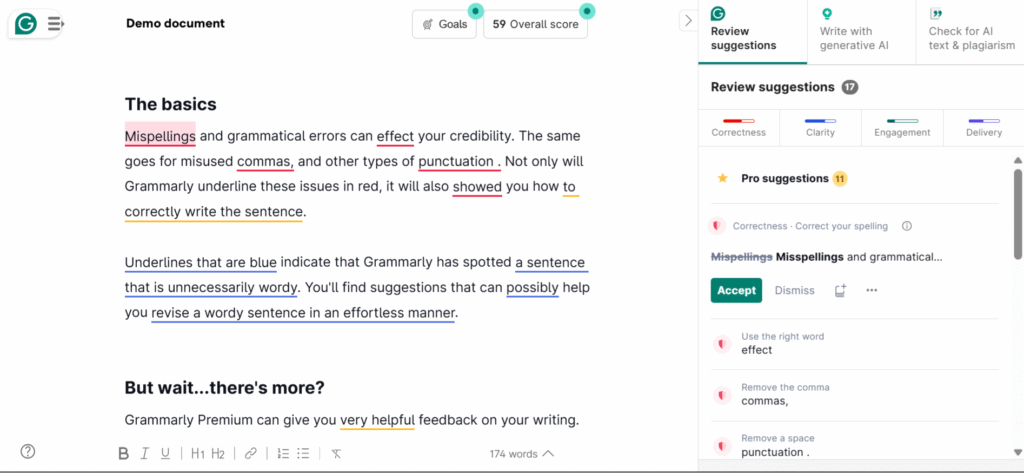
2. Cover Design and Formatting
- Canva: User-friendly graphic design platform perfect for creating book covers and promotional images.
- Vellum: Popular formatting software for beautiful eBooks and print-ready files (Mac only).
- BookBrush: Tailored for authors to create stunning marketing images, 3D book mockups, and ads.
3. Publishing Platforms and Distribution
- Amazon KDP: The go-to platform for publishing Kindle eBooks and paperbacks.
- Draft2Digital: For wide distribution to multiple retailers besides Amazon.
- IngramSpark: Best for professional-quality print books and broad bookstore distribution.
4. Marketing and Promotion
- Mailchimp / Kit: Email marketing platforms to build and engage your reader list.
- BookBub: Key promotional platform for paid book deals and visibility.
- Facebook Ads Manager: Essential for running targeted ads on Facebook and Instagram.
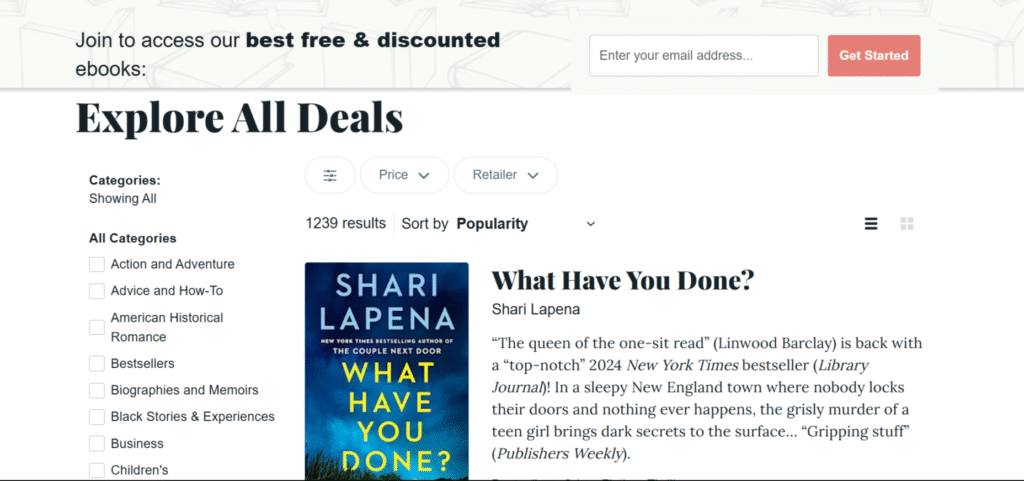
5. Learning and Community Resources
- Self-Publishing School: Offers courses and coaching for authors at all levels.
- Alliance of Independent Authors (ALLi): A supportive community with valuable guides and advocacy.
- Goodreads: Engage readers, run giveaways, and track book reviews.
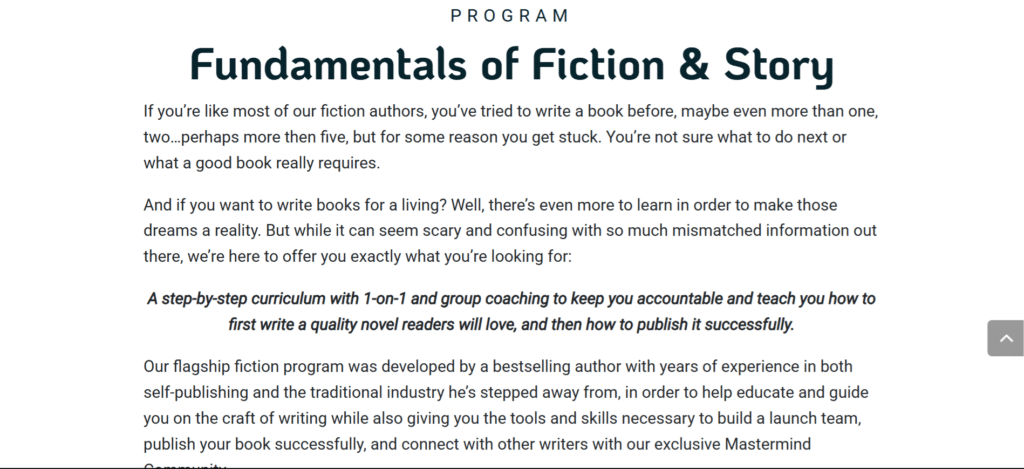
Final Thoughts
Self-publishing in 2025 is more accessible, flexible, and rewarding than ever before. Whether you’re writing your first novel, a niche nonfiction guide, or a passion project, This Guide to Self-Publishing in 2025 has shown you the full path—from idea to publication and beyond.
By defining your audience, editing like a pro, designing a standout cover, crafting a launch plan, understanding pricing and royalties, and choosing the right tools, you’re not just publishing a book—you’re building your author brand and long-term creative career.
Success won’t come overnight, but with patience, persistence, and the strategies outlined here, you’ll be well on your way to publishing a professional-quality book that you’re proud to share with the world.

L. Call to Action
This guide blog is your launchpad—not your finish line. The real magic begins when you take that next step.
Start today. Stay consistent. Publish with confidence.
These resources are crucial for authors determined to learn how to self-publish your book and reach their audience effectively.
Each step is vital in your journey on how to self-publish your book, ensuring you make informed choices.
The right approach to pricing can significantly enhance your understanding of how to self-publish your book.
Finally, remember that ongoing education on how to self-publish your book is crucial for long-term success.

